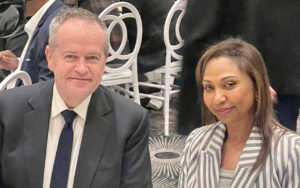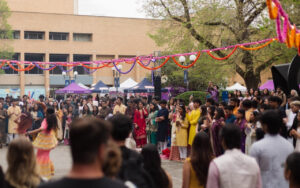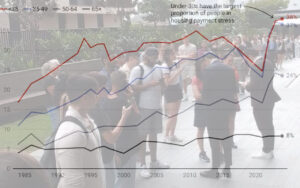Many of us have been taught that the left-wing view of life is correct, and that anyone who disagrees must be stupid or evil. In The Surprising Liberation, Duncan Smith sets out to refute this idea. He is largely successful, and the book is as good a takedown of leftism as any published in the last few years.
Smith admits to being a former leftist himself until realising that in their belief system, being a straight White male makes you the symbolic “enemy” of all other groups. This led him to a critical look at the bigger picture. He says we live in a “Global Progressive Regime” in which certain ideas rule – multiculturalism, feminism, equity, and various others. These all seem to be fine moral causes on the surface, but become more problematic the closer you look.
Smith identifies race and gender as the two main areas of conflict today. He claims that a decade ago he had no interest in race and racism, but “these topics are forced on you one way or another” such as through frequent praise of diversity, the George Floyd protests, or “the BBC’s bizarre and ongoing campaign to convince you England is a majority black nation”.
Despite claims by politicians that Australia and Britain have always been “diverse”, Smith notes that multiculturalism was an artificial system imposed on all Western countries at much the same time, in the 1970s. Whether motivated by greed, or naïve Utopian ideas about race, Western elites seemed to think placing many ethnic groups together would automatically lead to harmony and end the problem of racism. They supposed that “thousands of years of evolution and culture could be overcome by a few social policies dreamed up in the idealistic 1960s”. Now that cracks in the system are appearing, they blame the majority White populations, rather than their own faulty theories.
The section on aboriginals is of special interest to Australian readers. It is brilliantly argued, and contains some “truth telling” of a different sort than left-wing activists may have in mind. Yet Smith is quite respectful of the indigenous and saves his lampooning for the pious White leftists who kowtow to them. He suggests that guilt over the settlement of Australia isn’t rational or moral, as many such people suppose, but foolish and self destructive.
While race is the main area of social conflict, gender is not far behind. This leads to a detailed critique of feminism. Smith is no reactionary when it comes to gender roles and seems quite liberal in his views, but thinks it’s time women stopped pretending they’re oppressed. Most of the feminist battles were won decades ago, and we are now engaged in a phony and unnecessary gender war.
The book also says we should stop believing in myths like patriarchy. Smith suggests that the “Apex fallacy” does give the illusion of a patriarchy, but it is simply that – an illusion. Women see a small minority of powerful men at the top of society, and falsely attribute that power to men as a whole. The book examines Me Too, ideas about “toxic” masculinity, and other key topics. Thankfully the author does not resort to cheap shots, but favours a measured critique of feminist myths and exaggerations. Still, for all the talk of equal rights, as You Tuber Jericho Green once remarked, women tend to “treat equality like a fucking buffet!”
Part Four of the book describes “captured institutions”, starting with the ABC and BBC, who are at war with the nations they are supposed to serve. Smith also notes the undue dominance of leftism in all forms of the creative arts, in which obedience to certain ideas is mandatory, and enforced by “the hideous Red Guards of cancel culture”. It is thus laughable for artists to believe themselves rebels or free thinkers, when none of them are willing to step out of line. Most artists these days are conformists, whether by choice or necessity
This leads on to part five of the book, Leftist Pathologies, in which Smith describes the various peculiar traits of leftist thinking, listing 63 examples. In Agree or You’re Divisive, for instance, he notes that leftists are always trying to achieve “unity” – which to them means everyone accepting their agenda and obeying them. Those who don’t will be called “divisive”. But as the author says, “To put it in terms leftists will understand, suppose a man tells a woman he has a vision of them together and he wants to… ‘unite’ with her. Sadly for him, she might not agree. If she declines the offer, the man could call her divisive – but his idea of unity is not something she wants.”
Then there’s the Japanese Soldier, which alludes to the man found living alone on a Pacific island 30 years after the end of World War Two, who mistakenly thought the war was still going on. Smith draws a comparison with aging boomer lefties:
“These people grew up in the heady days of the 1970s when the left were actually the rebels. They are now part of the establishment, living in affluent suburbs and even having key roles in the media. Or they might be aging artists who were famous decades ago and have been living off it ever since.
No matter how privileged they are now, in their minds these eternal hippies are still fighting the ancient battles of their youth. When they rail against White racism today, they’re reliving their youthful heroics (conducted from afar) against apartheid in South Africa. They’re oblivious to how much the world has changed, in terms of the overall power balance and demographics. None of that matters, because in their minds they’re still standing shoulder to shoulder with Nelson Mandela. Living comfortably on the ‘islands’ of the affluent White suburbs they call home, for these aging heroes it will always be 1972.”
If one were to criticise Smith’s book, it does not ground its observations in economics or political theory. Still, there are other books that do that, and it is probably wise that the author stick to his strengths, which include the ability to explain concepts in a way that is fresh and original. A certain literary flair also makes this a more readable book than many others I have encountered, and it is often quite amusing.
Still, Smith is not merely lampooning. In the book’s most serious section, discussing the so called Great Replacement (a term coined by French author, Renaud Camus) Smith concedes that most middle class white leftists act from the best of intentions. Yet despite the most honourable of motives, they have been conned into collaborating in their own long-term ethnic replacement.
He also claims the leftism he grew up with is very different to that of today. He makes a distinction between “soft leftism”, which is about respect for women, gays, and free speech, which he still believes in, and the “hard leftism” of today which is identity politics, cancel culture, and an antiwhite, anti-male stance, along with other regrettable ideas. What people should realise is that the soft leftism they grew up with decades ago has morphed into the hard leftism of today, which is a nightmare and unduly dominates Australia and other countries. The “surprising liberation” is to walk away and leave it all behind.
Will anyone heed this advice? Given leftism’s deep penetration into our institutions, we should not be too optimistic. However , Smith has certainly given it a shot, and The Surprising Liberation is one of the more thought provoking critiques to have come out in the last few years.
You can buy the book on Amazon here (affiliate link).
























